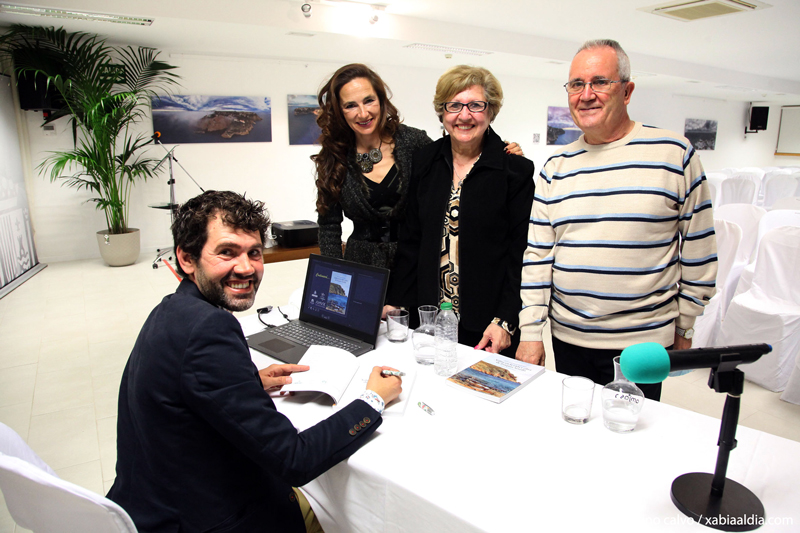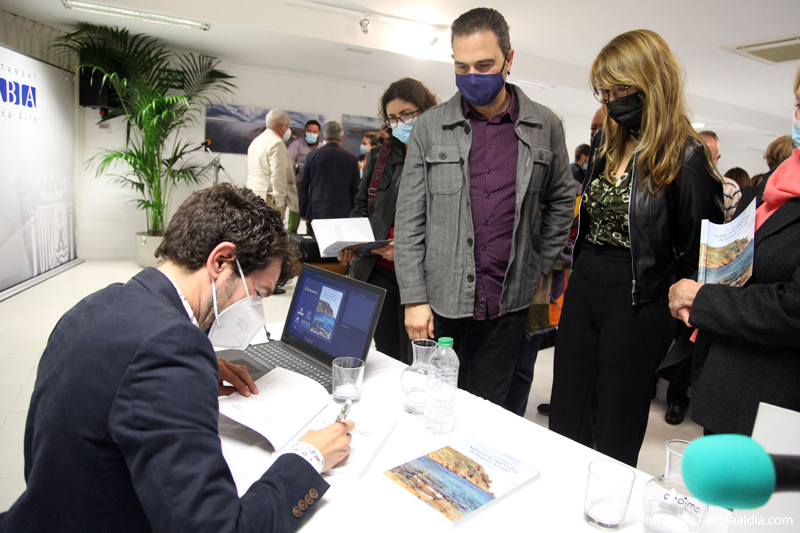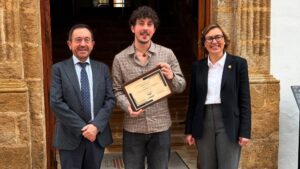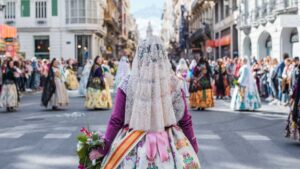David Gutiérrez: This is a book through which you can see Xàbia through the eyes of Sorolla
The historian presents his research on the relationship between Joaquín Sorolla and Xàbia

Gutiérrez with his wife and parents, after the presentation.
Monday 11th April 2022 – Mike Smith
Source: original article – Carlos López (Xàbia AL DÍA)
“I did not look for Sorolla, Sorolla looked for me”. And so the historian and collaborator of Xàbia AL DÍA, David Gutiérrez, began the presentation of his research on the relationship between the painter Joaquín Sorolla and Xàbia, which he proposed for the first edition of the Vila de Xàbia award promoted by the Municipal Archive of Xàbia, which is entitled: “Xàbia en la vida y obra de Joaquín Sorolla”. In English: “Xàbia in the life and work of Joaquín Sorolla”.
Last Friday evening, Gutiérrez presented his book to the senior staff of the Fundación Sorolla, his family, the mayor José Chulvi, the Councilor for Culture, Quico Moragues, councilors from the government team and the opposition, as well as a large number of residents who have been able to learn what that relationship was like through the guided tours that he organizes or the articles that he has been publishing through Xàbia AL DÍA (and ultimately translated into English for javeamigos.com).
He explained that six years ago “thanks to Vanessa” (his wife) he arrived in Xàbia and after seeing the landscape he realiseded that he was impressed. “She told me that Sorolla had been here and managed to encourage me to investigate”. Until then, he explained, he knew the usual thing about the painter, in fact he commented that he was more specialized in architecture and art.
From there, he began to do research and the possibility arose of created some tours along the routes that the painter took, he “posted them on the web” and then Xàbia AL DIA appeared and the opportunity arose for these investigations to reach many more people.

Gutiérrez stressed that the work he has produced “is not an investigation from the point of view of art” but has been a process to “try to marry” the enormous documentation that exists: the paintings themselves, the letters, press clippings, the oral testimonal, and then connect them “with the landscape of Xàbia” that Sorolla knew. “It was necessary to move” to those years (late 19th century and early 20th century).
Of all this he found:
- More than 150 references to Xàbia in letters, both to Clotilde and to her friends;
- 136 paintings so far known from Xàbia;
- 200 drawings related to Xàbia in the Sorolla Museum.
Structured around Sorolla’s visits to the municipality (five in total), Gutiérrez explained that the brilliant painter came to Xàbia for the first time on a commission to capture the grape harvest. He toured Dénia and Jesús Pobre, although it was in Xàbia where he was amazed by the light, and hence the first letter he wrote to his wife “Jávea sublime…”
Of all the visits, the most prolific from a creative point of view, with 82 canvases, was over three months (July through to September) 1905 with his wife, Clotilde, their children and friends.
Without wishing to reveal more about the investigation, which will soon be available to all residents, during his presentation the historian thanked the staff of the Fundación Sorolla, the painter’s family and especially Blanca Pons Sorolla , great-granddaughter of the painter. But also to all the residents who have helped him with the investigation and to approach the Xàbia of those years, as well as the people who accompanied the painter.

After the presentation, Gutiérrez signed the book for the attendees as a result of his research on the relationship between Sorolla and Xàbia. A work that, according to the municipal archivist, Juanjo Mas, is sure that “in 100 years it will still be here”, and whose end does not end since the author himself acknowledged that part of the investigation has not entered this volume. Will there be a second volume?





